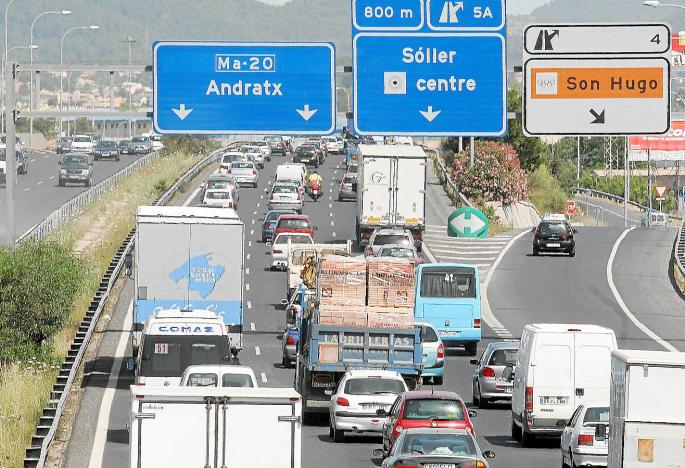A recent study confirmed what was already known: Palma has one of the highest levels of traffic congestion among cities in Spain - the second highest in fact. This is something about which, until now, the town hall has done very little. It is accepted that it requires a change of mentality as much as it might do money.
The current administration appears determined to try and make a difference. There are a number of plans being spoken about, with the emphasis shifting from talking about these in terms of cars to talking about pedestrians. Its programme includes a strategy for calming traffic through an initial measure for reducing speed where this is necessary.A recent study confirmed what was already known: Palma has one of the highest levels of traffic congestion among cities in Spain - the second highest in fact. This is something about which, until now, the town hall has done very little. It is accepted that it requires a change of mentality as much as it might do money.
The current administration appears determined to try and make a difference. There are a number of plans being spoken about, with the emphasis shifting from talking about these in terms of cars to talking about pedestrians. Its programme includes a strategy for calming traffic through an initial measure for reducing speed where this is necessary. Roads are being categorised according to the number of lanes. The Avenidas, for example, have three or more and a speed limit of 50kph. Then there are roads which are two-way and one-way. The town hall envisages that for the latter of these the limit will be cut to 30 or 40kph.
There is to be a pilot scheme in the Vivero and Rafal area. Residents there have asked the town hall for bike lanes, and these would require a reduction in both the speed and intensity of traffic. Mostly all the roads are one-way, while the area is highly residential. The idea would be for a cycling network to be connected to other bike lanes in the city. Speed limits would be set at no higher than 30kph. Eventually, all one-way roads would have traffic regulated in a similar fashion.
At present, the town hall is acting in response to specific requests, as with the Vivero scheme. In El Terreno there is a further request for traffic calming. The technicalities of this are to be looked into. In the old city centre there has been a limit of 30kph for some years, but this is not well observed and nor is the fact that it is a zone of special protection in which pedestrians and cyclists are given certain priority. Roads are being categorised according to the number of lanes. The Avenidas, for example, have three or more and a speed limit of 50kph. Then there are roads which are two-way and one-way. The town hall envisages that for the latter of these the limit will be cut to 30 or 40kph.
There is to be a pilot scheme in the Vivero and Rafal area. Residents there have asked the town hall for bike lanes, and these would require a reduction in both the speed and intensity of traffic. Mostly all the roads are one-way, while the area is highly residential. The idea would be for a cycling network to be connected to other bike lanes in the city. Speed limits would be set at no higher than 30kph. Eventually, all one-way roads would have traffic regulated in a similar fashion.
At present, the town hall is acting in response to specific requests, as with the Vivero scheme. In El Terreno there is a further request for traffic calming. The technicalities of this are to be looked into. In the old city centre there has been a limit of 30kph for some years, but this is not well observed and nor is the fact that it is a zone of special protection in which pedestrians and cyclists are given certain priority.
